This article discusses the most popular Vietnam meat dishes. Vietnamese cuisine has its own particular flavor. Lemongrass, ginger, mint, Vietnamese mint, long coriander, Saigon cinnamon, bird’s eye chile, lime juice, soy sauce, and Thai basil leaves are all used in Vietnamese dishes. Fresh ingredients, little dairy or oil, unique textures, and the use of herbs and vegetables have all been key features of traditional Vietnamese dish. Also, rice noodles, rice sheets, and rice flour are often used instead of wheat.
If you want to learn more about these traditional Vietnamese dishes, scroll down and continue reading.
Vietnamese Meat Dishes
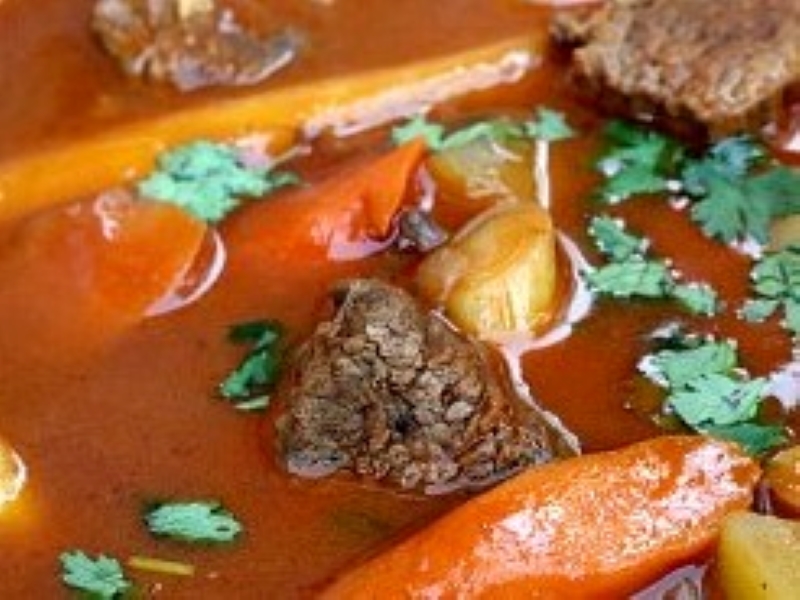
Bo Kho Or Vietnamese Beef Stew
Bo kho, commonly known as beef stew, is a Vietnamese meal in which beef is braised in a mixture of fish sauce, sugar, and water, or a water replacement such as young coconut juice over low heat. The salty, savory dish that results is designed to be served with rice noodles, bread, or steamed rice.
Diced beef, lemongrass, carrots, cinnamon, chile, pepper, garlic, and shallots are among the ingredients cooked in a spicy and fragrant broth.
It’s generally cooked for breakfast, with chopped green onions, coriander, and onions on top.
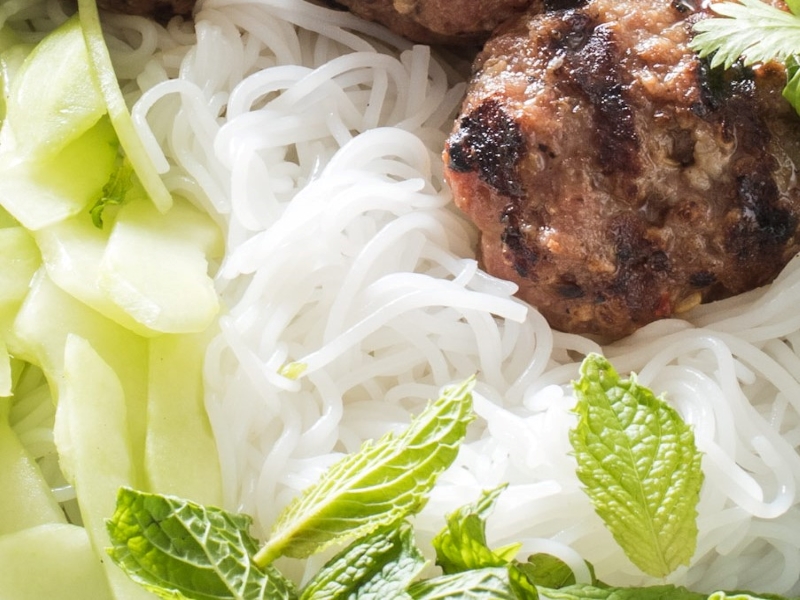
Bún Chả
Bún chả is a Vietnamese noodle dish with grilled pork meatballs that is claimed to have originated in Hanoi, Vietnam. Bn ch is a dish that consists of grilled fatty pork (cha) over a bed of white rice noodle (bun) and herbs, with a dipping sauce on the side.
Bún chả is a popular Vietnamese noodles in Hanoi that originated there. Outside the regions of Hanoi, a similar rice vermicelli and grilled meat dish known as bún thịt nướng is offered alternately over all of Vietnam.
The common ingredients in making this type pork and noodle dish are meat (minced pork shoulder to make meatball, pork belly), rice noodles, dipping sauce (fish sauce with sugar, lemon juice, vinegar, stock, crushed garlic, chili peppers, etc.), pickled vegetables, such as green papaya salad (or carrots, onions), and fresh herbs such as rice paddy herb, cabbage, Láng basil, bean sprouts, Vietnamese balm .
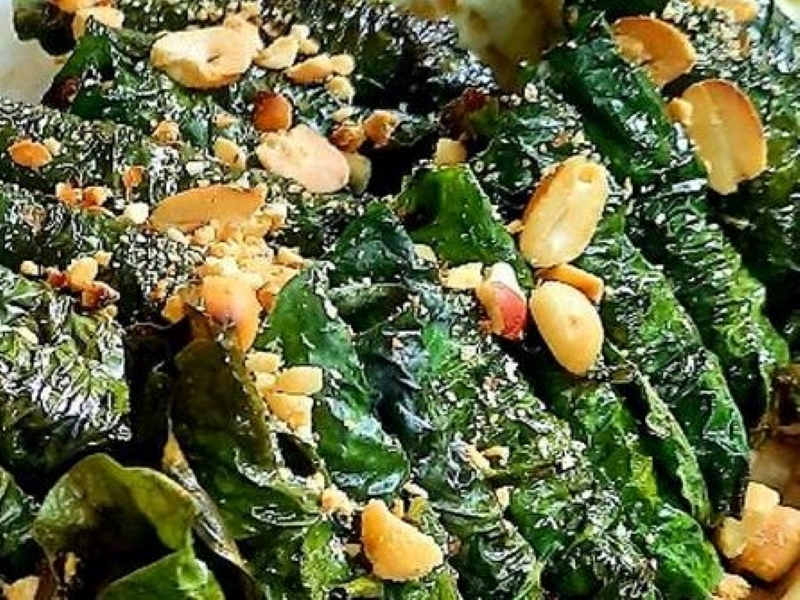
Bò lá lốt
Bo la lot is a Vietnamese ground beef dish served in lolot leaves, often known as “betel” leaves in certain English sources. The leaves have a strong scent and a therapeutic flavor. The dish is commonly sold at barbecues.
The rolls are traditionally served with rice noodles, lettuce, rice paper, herbs, pickles, and dipping sauces after being roasted over charcoal.
It’s best to eat bo la lot wrapped in rice paper with a variety of side dishes, garnishes, and condiments.
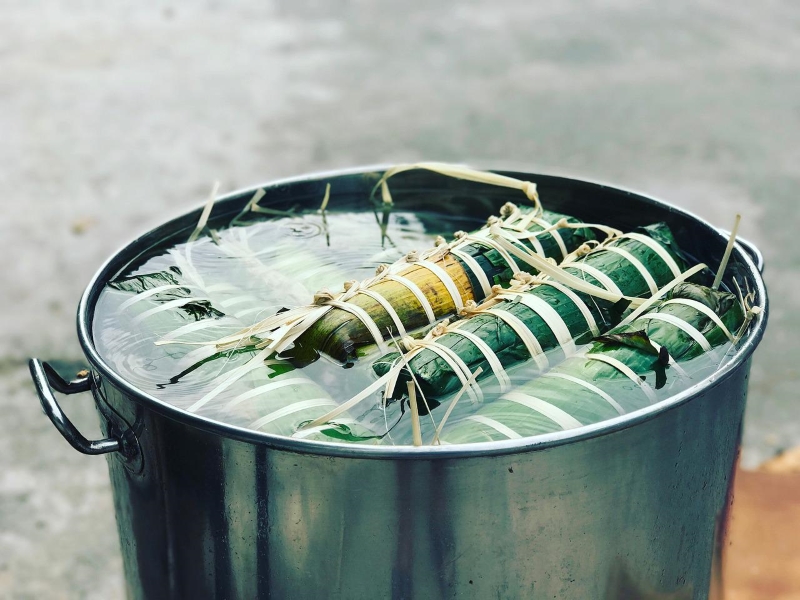
Bánh Tét
Banh tet is a savory but occasionally sweetened Vietnamese cake composed mostly of glutinous rice, which is rolled into a thick, log-like circular shape in a banana leaf and filled with mung beans and pork, then boiled. The banana leaf is removed after cooking, and the cake is divided into wheel-shaped portions.
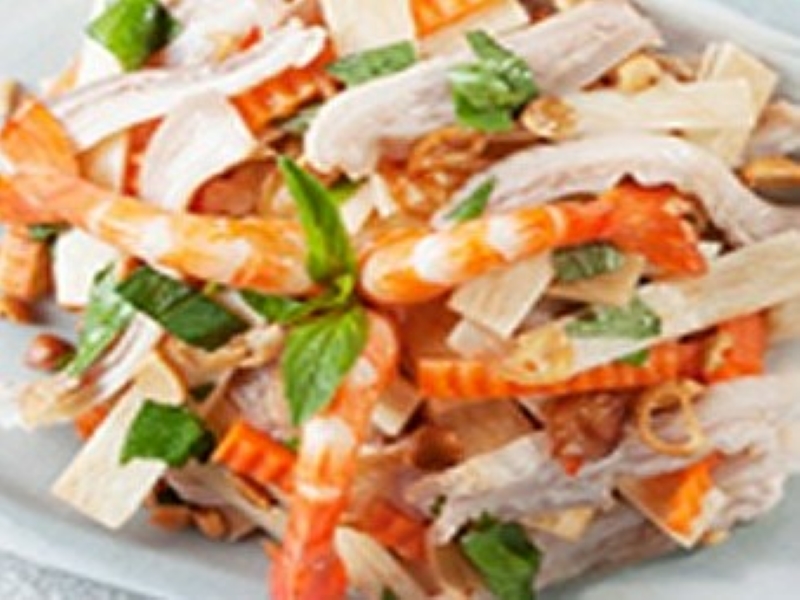
Goi Co Hu Dua Thit Bo
Tender beef slices are combined with coconut palm heart and veggies in this flavorful salad dish. The heart of a coconut palm is created from the inside of the coconut tree. It’s tender and has an artichoke taste. The ingredients are combined with lime, fish sauce, oil, salt, and chili. It is often served on top of a huge fried rice paper that can be broken off and used to scoop up the delectable mixture.

Pho
Pho is a Vietnamese noodle soup created with broth, rice noodles (bánh pho), herbs, and meat, generally beef (pho bo) but occasionally chicken (pho gà). Pho is a famous Vietnamese dish that is always eaten in homes, street food and stalls, and restaurants all around the country. This type of noodle soup is considered the national dish of Vietnam.
Cinnamon, star anise, coriander seed, roasted ginger, roasted onion, cardamom, fennel seed, and cloves are all used to flavor a beef or chicken broth. Near the end of preparation, fish sauce is added to the noodle soup.
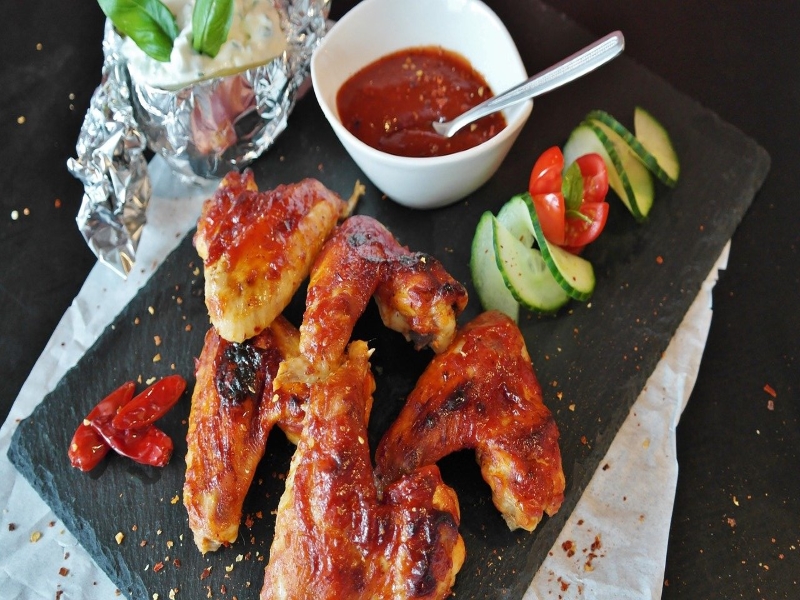
Gà Nướng Sả
Gà Nướng Sả is grilled chicken with lemongrass in Vietnamese cuisine. Garlic, honey, onion, pepper, and sugar are all common ingredients. Beef and other meats thats are grilles are also popular options.

Cha Lua
Lean pork, garlic, potato starch, ground black pepper, and fish sauce are the key ingredients to make cha lua, a Vietnamese sausage. The pork must be pounded into a paste, chopping or grinding the flesh would result in fibrous, dry, and crumbly meat. A few spoonfuls of fish paste are added to the meat near the end of the crushing stage to enhace flavor. Salt, black pepper, and sugar can all be used to season the dish. The meat is currently known as giò sống, which means “raw sausage,” and may be utilized in a various recipes other than sausages.
The sausage is usually sliced and paired with bánh mì, bánh cuốn, or xôi, or braised in fish sauce and black pepper with other meat meals.

Bò Né
Bo Ne is a Vietnamese breakfast dish rich in protein. It is a Vietnamese-style steak, served on a small cast iron skillet with the oil still boiling and foaming. It is prepared with spice-marinated beef cuts like skirt steak, and it is served on a hot with fried eggs, onions, chili sauce, and a dollop of pate.

Vietnamese Pork Aspic /Thịt đông
The Vietnamese version of aspic is Thịt đông. Slowly simmering pork meat and different pork cuts such as trotters and hocks, as well as pork skin, carrots, mushrooms, and various spices, produces this kind of meal. After cooking, the mixture is allowed to cool until it reaches its characteristic jellied texture.
The meal is popular during Vietnamese New Year and is mainly associated with northern Vietnam. It is finest served with a dish of pickled onions and a bowl of rice.
The dish is somewhat pink in color, soft and fatty, with a meaty aroma, pepper, and crispy wood ear, as well as a cool jelly flavor (frost).
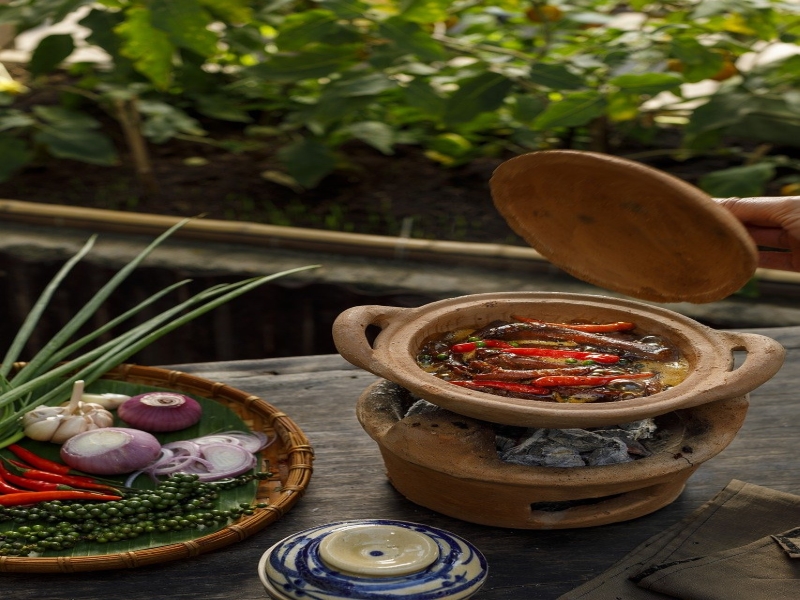
Ca Kho To
Ca Kho To is a caramelized fish dish that is prepared in a brown clay pot with sugar and coconut water until the fish produces a juicy sauce.
The dish originated from South Vietnam, where seafood is always available. Ca loc, or snake-headed fish, is traditionally used in this meal. However, in the West, catfish or mackerel are commonly substituted for this sort of fish, which is difficult to come by fresh. Any sort of fish can be used in this recipe.
Ca Kho To is a Vietnamese staple. It is frequently consumed as the primary meal of the day at home.
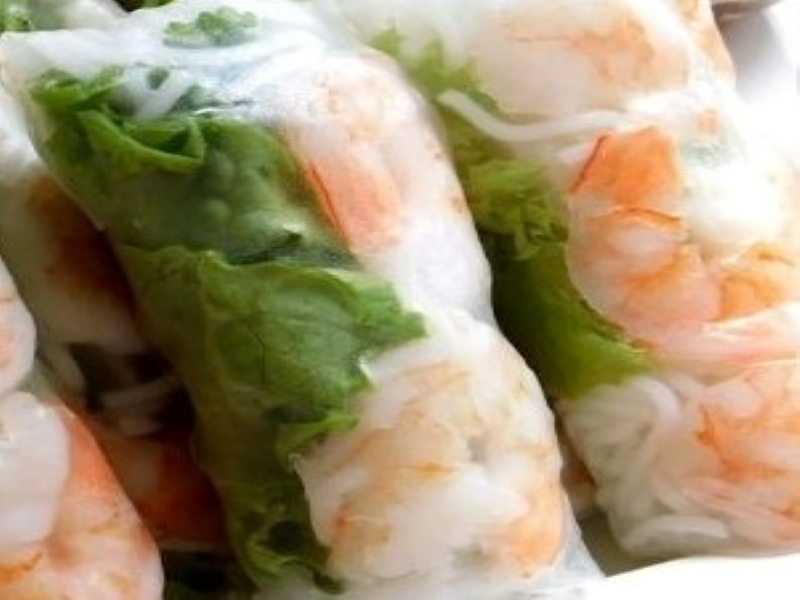
Gỏi Cuốn/Spring Rolls
Pork, prawns, veggies, bun (rice vermicelli), and other ingredients are wrapped in Vietnamese bánh tráng in the classic Goi Cuon dish (typically called as rice paper or cold roll). Unlike other spring roll foods that are thought to have originated in China, Vietnamese goi cuon is a Vietnamese invention made using rice paper.
Goi cun is served fresh, whereas others, such as Vietnamese cha gio, are served fried. They are served at room temperature, or chilled, and the exterior is not deep-fried or cooked. Customers in Vietnamese restaurants believe these Vietnamese spring rolls to be a extremely famous appetizer.

Boiled Chicken or Gà luộc
Boiled chicken is a popular chicken meal made by boiling the chicken in a saucepan with hot water or chicken broth until it is thoroughly cooked.
Boiling chicken is quite popular in Vietnam, especially in Lunar New Year celebrations, offerings and tables, and is recommended for maintaining the sweetness of chicken.
Gà luc is created using a whole chicken, ginger, salt, scallions, turmeric, and lime leaf strands, among other ingredients.
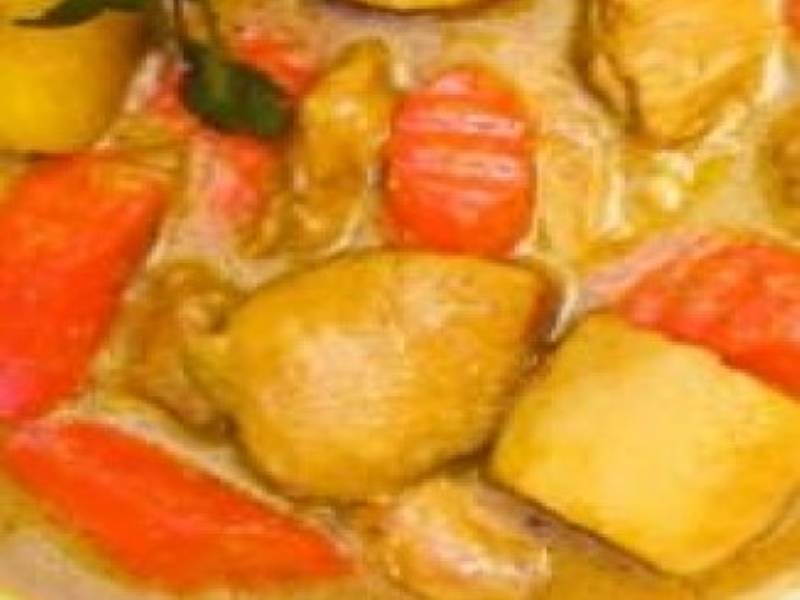
Vietnamese Chicken Curry Or Cà ri gà
Cà ri gà is a Vietnamese chicken curry that is comparable to Indian chicken curry. The recipe is simple to make and includes chicken chunks, potatoes, carrots, onions, garlic, coconut milk, chicken broth, and herbs and seasonings like lemongrass, fish sauce, bay leaves, and curry powder.
Usually, the meat should is marinated overnight if possible. The curry is cooked until the potatoes are soft and all of the other ingredients are cooked thoroughly. Serve the meal with steaming white rice and a crispy fresh baguette on the side, which is commonly used for dipping.